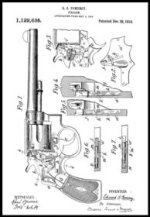I have a Smith and Wesson World War II Victory SN V637011, which was manufactured before the hammer block upgrade, therefore the gun can discharge if dropped on the hammer.
Is there a hammer block upgrade available for this revolver? Will Smith and Wesson do it?
Is there a hammer block upgrade available for this revolver? Will Smith and Wesson do it?

